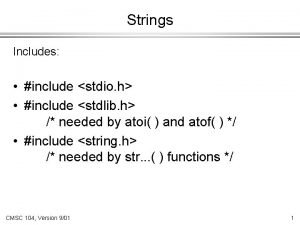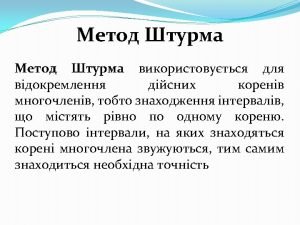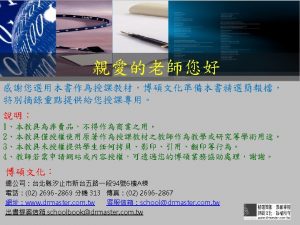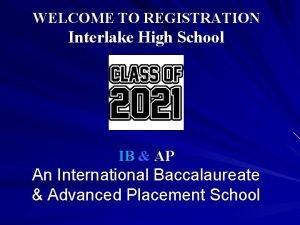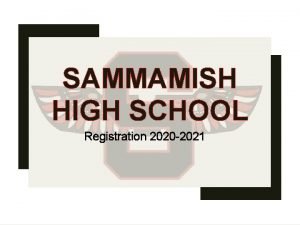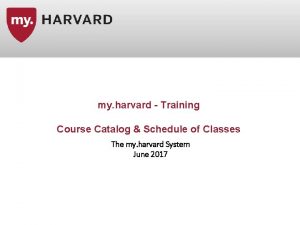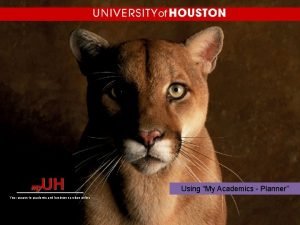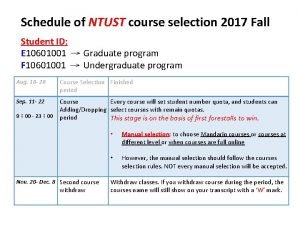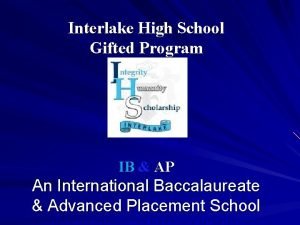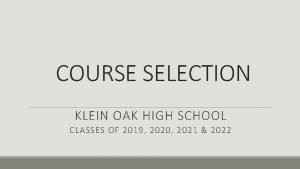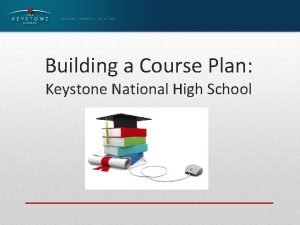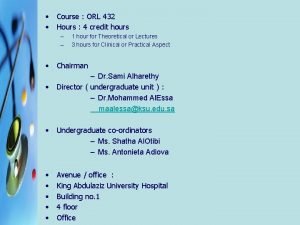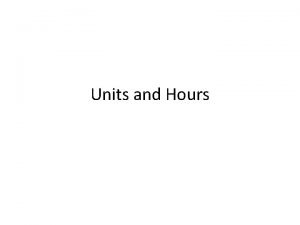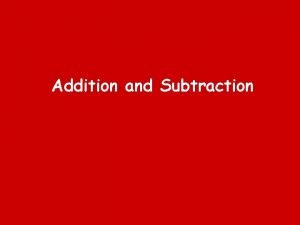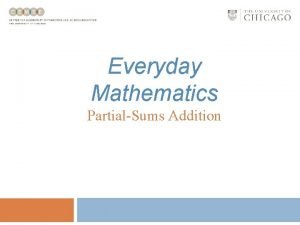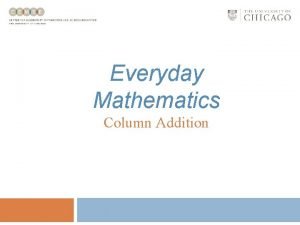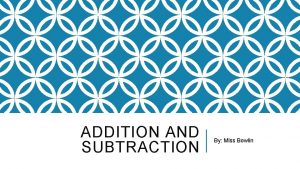COURSE ADDITION CATALOG DESCRIPTION To include credit hours











- Slides: 11

COURSE ADDITION CATALOG DESCRIPTION To include credit hours, type of course, term(s) offered, prerequisites and/or restrictions. (75 words maximum. ) 4/1/09 Course Addition 1

COURSE ADDITION SYLLABUS Catalog Title Transcript Title Course number Credit hours Semester/ year Meeting days Room location Lab/discussion session location • Webpage (if existent) • Prerequisites or other requirements (e. g. Does it fill an • • academic requirement such as Communication Intensive or Culminating Experience, or is it cross-listed with another course and, therefore, cannot be taken twice under different numbers)

COURSE ADDITION SYLLABUS • • • Instructor Full name/ title Office location: Office telephone number: Office hours: e-mail address: Teaching Assistant name (s) TA office location: TA e-mail:

COURSE ADDITION SYLLABUS Course will be a prerequisite for: Course will be a corequisite for: Why is this course needed? How does it fit into the broader programs of the department, the School, or the Institute as a whole? Extent of duplication of proposed course with other courses? Resource Impact Statement. In this section, please address curriculum, facilities and personnel issues. For example, will this course require multimedia facilities, an increase in number of classes, laboratory sections, or assistants, a special type of classroom design or support personnel. 4/2/09 Course Addition 4

COURSE ADDITION SYLLABUS Course Description: Course objectives: Student Learning Outcomes: (between 4 to 8 sentences with “student” as the subject in the sentence, and the verb describing the outcomes, what the students should be able to do upon successful completion of the course. The outcomes describe student abilities, skills, knowledge application, that can be observed and measured with the assessment that was designed for the respective course –such as remember, demonstrate, apply, analyze, compare, contrast, create, evaluate, etc. For a worksheet and details on writing Learning outcomes see Office of Assessment web site) 4/1/09 Course Addition 5

COURSE ADDITION SYLLABUS Course text(s): and other reading materials, information on other supplementary materials Course Assessment/Measures: (the list of course assessments (e. g. , exams, papers, recitation performance, homework, labs, projects, etc. ) that should reflect the Students Learning Outcomes. It is advisable to give also the due date and value points for each assignment. Separate of syllabus assessment measures can have a large and more detailed description. Where appropriate, the assessment should have a separate grading rubric which can be provided to the students when the assessment is presented in class. Students must have a clear understanding how they will be assessed and how do they need to perform to be successful in the course). If not as a separate section, then all assessments should be presented as embedded in the course calendar or in the grading system. This will inform students on the measures used for the learning outcomes. Assignments: (the list of assignments should reflect the Students Learning Outcomes. It is advisable to give also the due date and value points for each assignment. Where appropriate, the assignment should have a grading rubric which can be provided to the students separately) 4/1/09 Course Addition 6

COURSE ADDITION SYLLABUS Course calendar: (a week by week list of topics to be covered till the end of the course, as well as due dates for major assignments, special events, and exam dates. If the instructor would like to keep a certain flexibility to the schedule the following text can be insert on top of the schedule: “This is a tentative schedule and subject to change depending upon the progress of the class”). 4/1/09 Course Addition 7

Grading criteria: (the grading criteria should include the following information: The fraction of the total grade determined by each part of the course assessment (e. g. , exams, papers, recitation performance, homework, labs, projects, etc. ) Whether a single poor performance will be dropped or weighted lower, or if some form of “resurrection” will be built into the grading system The means that students may appeal grades Each course syllabus should identify the mechanisms that are used to provide students with assessment of their progress during the semester. By mid-semester students should receive some form of assessment that indicates their standing in the class. The mechanism for each individual assessment across the course can be determined by each faculty member, and does not necessarily have to be a letter grade (e. g. , can be points, percent, or specific formulas to calculate the final grade). (The instructor should indicate what criteria are used to assign each letter grade in the course. ) 4/1/09 Course Addition 8

COURSE ADDITION SYLLABUS Attendance policy: (if attendance is required the instructor should include the penalties for non-attendance) Course policies: These will be designated by the instructor in advance to the student and will deal with the following issues. Attendance and lateness Class participation, how will be measured and how participation will be graded (attendance and participation are two different things, being present physically vs. being active in class work) Missed exams or assignments – the syllabus should inform the student if assignments and exams can be made up if existent any extra credit policies should be stated as well Lab safety/health - This should include reference to safety manuals and procedures that are available to all research personnel at Rensselaer. Incomplete grades, Withdrawal from course 4/1/09 Course Addition 9

COURSE ADDITION SYLLABUS Academic Integrity: The Rensselaer Handbook of Student Rights and Responsibilities define various forms of Academic Dishonesty and procedures for responding to them. All forms are violations of the trust between students and teachers. Student-teacher relationships are built on trust. For example, students must trust that teachers have made appropriate decisions about the structure and content of the courses they teach, and teachers must trust that the assignments that students turn in are their own performance. Acts that violate this trust undermine the educational process. Collaborative or group work should be encouraged at all times. The instructor must specify when collaboration will be explicitly forbidden (e. g. , individual take home exams). The syllabus should also contain, in writing, guidelines for what is considered cheating, and plagiarism should be also forbidden. The penalties for cheating and plagiarism must be stated in the syllabus For example: “A grade of zero will be given on the first assignment where a violation is detected. If there is a subsequent infraction the student will receive a grade of F for the course. ” 4/1/09 Course Addition 10

COURSE ADDITION SYLLABUS Other course specific information: This section can have statements concerning: Students with disabilities, support services on campus or department, library, and computer technology help information. Also any advice for successful performance in the course. 4/1/09 Course Addition 11
 #include stdio.h #include stdlib.h #include string.h
#include stdio.h #include stdlib.h #include string.h #include stdio.h #include conio.h #include stdlib.h
#include stdio.h #include conio.h #include stdlib.h #include stdio.h int main()
#include stdio.h int main() Interlake high school course catalog
Interlake high school course catalog Sammamish high school counselors
Sammamish high school counselors Harvard class schedule
Harvard class schedule Uh course catalog
Uh course catalog Ntust student information system
Ntust student information system Interlake high school course catalog
Interlake high school course catalog Klein oak course catalog
Klein oak course catalog Keystone national highschool
Keystone national highschool
